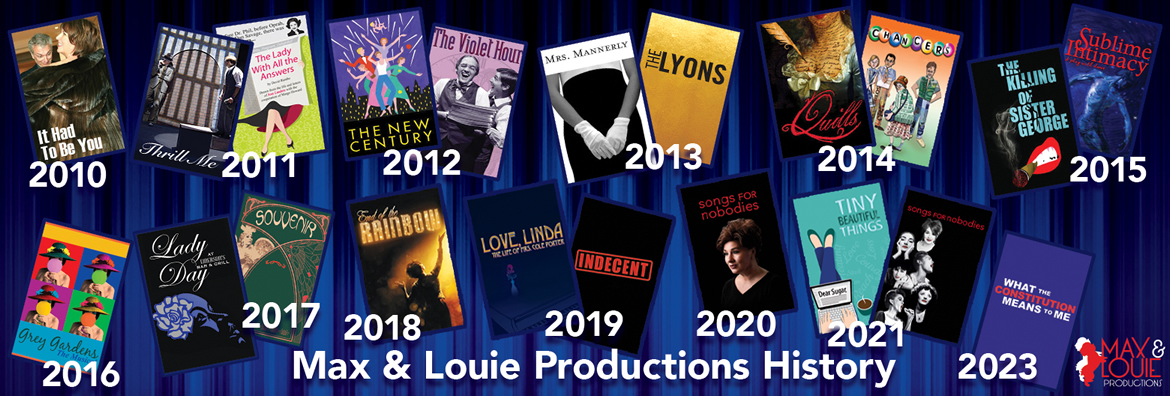Belleville News Democrat
Website Review
Lynn Venhaus – Belleville News Democrat, July 13, 2015
A boundary-pushing play 50 years ago, “The Killing of Sister George” has lost some of its bite, but not its bark.
The title refers to a middle-aged actress’s role on a British radio soap opera, and how her character’s demise comes to be. Max and Louie’s fearless production benefits from Lavonne Byers smoking the stage as the prickly, masculine, gin-soaked June Butrick.
June is a popular figure on “Applehurst” as the beloved village nurse, Sister George, but is quite contrary in real life.
Intimidating, with a mannish swagger despite wearing matronly wool suits and sensible shoes, breadwinner June comes home from a crummy day at the studio to crab about her co-workers. Thus begins the tirades that increase with each perceived slight, and her cheery blond flatmate bears the brunt of her wrath.
She shares a flat with Alice McNaught, nicknamed Childie (Shannon Nara), a nubile but vacuous young woman, who tends to a large Victorian doll collection.
Broadcasting executive Mercy Croft (Erin Kelley) comes over to deliver bad career news on several occasions, expressing sympathy for Childie’s plight.
Frank Marcus’ 1965 London-set play was scandalous subject matter because gay couples were not open. The slightly more overt 1968 film is now a cult classic, but was the first ‘serious’ movie to earn an X-rating. But the play only implies, never states, that they are lesbians.
Marcus’ words are sharper on power plays, at home and work, than love and sexuality. Today, we might get more insight into the twisted dependency. Director Brooke Edwards focuses on the age discrimination aspect of show biz, which remains a topical issue, and how people use each other.
Considered a dark comedy, it’s not funny ha-ha with June flying into drunken rages and Childie’s torrents of tears, but occasionally quips surface. Cooper Shaw is amusing as neighbor lady Madame Xenia, a colorful fortune teller. The soap opera shenanigans are comic relief, too.
The four actresses are a solid unit, although their characters are exaggerated. Byers delivers another fierce, technically accomplished performance, while Nara holds her own with an emotionally complex interpretation. Kelley is the epitome of calculated management, cool and collected, never flustered, but also demanding.
Their dialect coach should be commended, for the quartet retained their accents throughout the three acts, three sound as if speaking British was second nature, and Shaw evokes Eastern European inflections.
Yes, there are three acts, the standard back in the day. However, this production has fused the first and second acts together so the play runs for 90 minutes until there is a break. That can make an audience restless.
The actresses are compelling enough to sustain interest, and with every new outfit the mod Childie or the posh Mercy wears, we are transported back in time to Carnaby Street. Costume designer has accented the groovy fashions with stunning hats that Twiggy likely wore on magazine covers.
Fashions aren’t the only element indicative of the production’s attention to details. The music selection, including the hit songs of Herman’s Hermits, Petula Clark and The Beatles, enhance the experience. Dunsi Dai’s scenic design is both captivating and functional.
The play no longer shocks, but Sister George still packs a punch.
